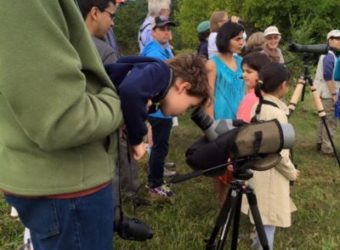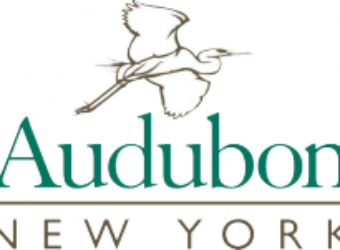February and March Events!
[Bald Eagle image: Bonnie Talluto]
Visit our Google calendar at www.sawmillriveraudubon.org/calendar for event details and updates. Be sure to subscribe to our free, private email list to get additional details and early notice of new trips and events. Visit www.sawmillriveraudubon.org/list to subscribe.
Public Events & Programs
Saturday, February 11,
9:00 am – 4:00 pm
Hudson River EagleFest!
SMRA is proud to be part of the 8th annual Hudson River EagleFest centered at Croton Point Park on Saturday, February 11 from 9:00 am to 4:00 pm (The snow date is Sunday, February 12.)
For the past decade, Teatown Lake Reservation has been the prime mover behind this event which celebrates the return of our national bird, the Bald Eagle, to the Hudson Valley. SMRA does our part at EagleFest by leading bird walks inside Croton Point, offering our “Raptors for Rookies” program at Croton Point, providing birders with spotting scopes at the Croton boat ramp and George’s Island to help spot eagles and other birds, and underwriting the cost of warming tents at both locations. SMRA Board Member Larry Trachtenberg, donated the cost of the warming tent at George’s Island. (Thank you, Larry!)
The festival will also feature live birds of prey shows, two screenings of the film Eagle Huntress at Pace University and music by Tom Chapin and other artists. There are even guided bus tours to visit all the key eagle viewing spots. Please note that some special events do require advance reservations before the event.
There is an EagleFest admission charge to enter Croton Point Park for the main event tent and other activities there. To find out more and make advance special event reservations, visit: www.teatown.org/eaglefest-schedule
Thursday, February 16, 7:00 pm
Exploring the Gaspé Peninsula
with Charlie Roberto
Teatown Lake Reservation
Charlie Roberto will introduce us to the beautiful Gaspé Peninsula in Québec and its abundance of birds and other wildlife, including images from Saw Mill River Audubon’s trip in 2016. Co-sponsored with Teatown Lake Reservation.
Thursday, March 16, 7:00 pm
Field Guide to Birds of New York
With author Corey Finger
Chappaqua Library
Author Corey Finger will overview his work on the American Birding Association’s Field Guide to Birds of New York, published in July 2016 and offering tips on finding and IDing birds in the Empire State. Book sales & signing follows. Come early for best parking. Co-sponsored by Chappaqua Library.
February Birding Road Trips
Space in cars and numbers of cars in caravan will be limited for a better experience for all. Call/email ASAP to register and for meeting place and time, and include your cell number to office@sawmillriveraudubon.org or 914-666-6503. Minimum of three people per car.
Sunday, February 5, 8:00 am
Birding at Barnegat & Other NJ Sites
We will be traveling to Barnegat Lighthouse on the New Jersey coast to enjoy the view of wintering Harlequin Ducks, possible Purple Sandpipers and other winter coastal visitors. Based on the most recent sightings reports, we then plan to visit one or more other nearby north New Jersey locations for winter birds.
Sunday, February 26, All Day
Winter Birding in Dutchess County
We plan to make a circuit of varied habitats in Dutchess County for winter birds including the possibility of winter raptors like Rough-legged Hawk, Golden Eagle or even a Snowy Owl! Along the way, we’ll keep an eye out for other winter grassland species like Horned Larks and Snow Buntings. John Askildsen of Dutchess County’s Waterman Bird Club will be our leader.
Flight of the Woodcock, 6:00 – 7:30 pm both dates
Saturday, March 11: Muscoot Farm
Sunday, March 12: Croton Point Park
Gather with us at dusk for the seasonal courtship display of American Woodcock. Meeting place & details upon registration. Registration required by calling or emailing our office. Space limited. For adults and youth 10 & up.
Every Monday, 8:30 am
Guided Bird Walks
at Area Hotspots
Meet in main parking area for all walks.
1st Mon: Muscoot Farm
2nd Mon: Rockefeller State Park
3rd Mon: Teatown Lake Reservation
4th Mon: Croton Point County Park
5th Mon: Location varies.( No 5th Monday walk in January.)
Every Second Saturday, 9:00 am
Guided Hike at Brinton Brook
Rain, snow or shine. Meet at main parking lot off Route 9A. No registration needed. Best for adults and youth age 6 and up.
Every Saturday & Sunday,
9:00 am – 11:00 am
Project FeederWatch
at Croton Point Nature Center
Join SMRA volunteers at the Croton Point Nature Center every weekend morning from now until early April as we identify and count birds visiting the bird feeding station there. We watch from inside the Nature Center. Beginners encouraged. Great opportunity for bird photography as well.










 While not the birdiest time of year for Utah and northern Arizona, we did enjoy several special bird highlights including: a Townsend’s Solitaire in Zion; Williamson’s Sapsucker, Cassin’s Finches and Pygmy Nuthatches in Bryce Canyon; singing Canyon Wrens in Capitol Reef; a beautiful Golden Eagle in Canyonlands; a Say’s Phoebe behind our hotel in Moab; and a very tame Woodhouse’s Scrub Jay at Grand Canyon, where we also caught a small part of the raptor migration through the Canyon. Roger and Michele Garrison had the additional thrill of photographing a Northern Pygmy-Owl along Bright Angel Trail at Grand Canyon.
While not the birdiest time of year for Utah and northern Arizona, we did enjoy several special bird highlights including: a Townsend’s Solitaire in Zion; Williamson’s Sapsucker, Cassin’s Finches and Pygmy Nuthatches in Bryce Canyon; singing Canyon Wrens in Capitol Reef; a beautiful Golden Eagle in Canyonlands; a Say’s Phoebe behind our hotel in Moab; and a very tame Woodhouse’s Scrub Jay at Grand Canyon, where we also caught a small part of the raptor migration through the Canyon. Roger and Michele Garrison had the additional thrill of photographing a Northern Pygmy-Owl along Bright Angel Trail at Grand Canyon.